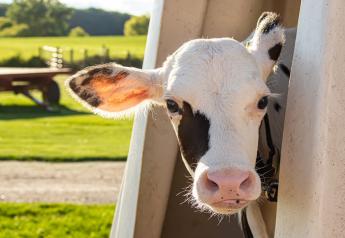Meaty Challenge: What's on the Menu for Future Cities?

Juicy lab-grown steaks and burgers made of plant-based meat could soon be tempting hardened carnivores scanning restaurant menus in the world’s biggest cities, as food producers explore fresh ways to feed booming populations.
With people pouring into cities across the developing world, rocketing demand for meat and dairy products will make it essential to find high-protein alternatives that have a lower environmental impact, some experts say.
“The food of the future, as we become more and more urban, will continue to be meat but it won’t be meat from industrialized animal agriculture,” said Bruce Friedrich, executive director of the Washington-based Good Food Institute.
“It will be meat made from plants, and it will be meat grown in factories without farmers and slaughterhouses,” said Friedrich, who calculates that traditional meat will be eliminated in high-income countries by 2050.
Others predict bugs or high-protein algae such as spirulina will be high on the list of future foods, along with fish produced in deep-sea farms or vast urban warehouses.
But with a 50 percent jump in agricultural production needed to support nearly 10 billion people by 2050 as climate change bites, according to the U.N. Food and Agriculture Organization (FAO), more obvious solutions may lie in cutting calories and animal protein in the diets of the rich, making agriculture more efficient, and reducing the one-third of food that is wasted.
About 80 percent of all agricultural land is dedicated to grazing or growing feed for animals, the FAO says. In addition, the livestock industry consumes 10 percent of the world’s freshwater, while generating methane and other planet-warming emissions, and causing large-scale deforestation.
Kind to Animals
A handful of companies are racing to develop technology that could drastically reduce the price of so-called “cultured” or “clean” meat, grown from starter cells taken from live animals.
They say it could eventually be produced in urban “breweries”, would cost less than real meat, and use 99 percent less land.
“Meat-eaters in a few years will be able to choose between traditional meat that includes animal suffering and non-animal suffering meat that is 100 percent meat and resembles meat’s texture, taste and look,” said Yaron Bogin, CEO of the Israel-based Modern Agriculture Foundation.
Elsewhere, start-ups are using “cellular agriculture” to develop animal-free eggs, milk and fish.
San Francisco-based Hampton Creek wants to get the first clean meat product to consumers next year, but industry watchers and other companies say huge technological and regulatory hurdles mean it will take five years for the food to arrive in high-end restaurants and a decade to reach mass-market consumers.
“You’ll be able to create food you can store and transport easily,” said Ido Savir, chief executive of Israeli firm SuperMeat, whose cultured chicken will be kosher and halal. The technology will help feed people in developing countries who now consume almost no meat or have a poor-quality diet, he added.
Big producers in the $750-billion meat market are also looking at alternatives. Top U.S. meat processor Tyson Foods has set up a $150-million fund to develop cheap, alternative protein sources and invested in plant-based meat company Beyond Meat.
Meanwhile, Bill Gates, Richard Branson and commodities giant Cargill have sunk money into California’s Memphis Meats which is developing “clean” poultry, beef and pork.
Bet on Bugs
Other entrepreneurs are eyeing protein-rich bugs, already eaten by billions, which could easily be bred in cities on urban farms that don’t take up large slabs of pricey real estate.
New York’s Terreform ONE has developed a futuristic modular shelter and cricket farm, crowned with spiky quills, ideal for cultivating high-protein crickets that can be ground into flour.
“You can see protein changing because it can be produced inside cities,” said Mitchell Joachim, Terreform co-founder.
“It makes a lot of sense to do it in the case of insects - pound for pound it’s a crushing difference. It’s almost 1,000 times less water, 300 times less carbon. It’s incredibly cheap to make bugs in cities,” he added.
Affordable pricing and astute marketing are key to convincing consumers to try radically new foods, particularly as they find it harder to ignore the ethical and environmental impact of their purchases.
“It’s always money; it’s availability,” said Morgaine Gaye, a food futurologist. “We’d like to think it’s about how good it tastes, but that’s actually pretty far down the line as you’ve got to get someone to pick it off the shelf.”
The “celebrity cool factor” can make a big difference to sales, if companies can get stars to endorse brands, she added.
Despite the buzz around future foods, countries could still manage to meet growing demand and environmental targets using what we eat today if they make key changes to the food system, said Lorenzo Giovanni Bellù, a senior economist with the FAO.
Methods like precision agriculture, tailored to the exact requirements of crops, could make production more efficient, while using more renewable energy would cut carbon emissions, said Bellù.
Diets also need to become better balanced to cut over-eating, especially of meat, while increasing the amount of animal protein available to the poor, he added.
Many simple solutions exist that can harness what the world already knows, he emphasized, including adapting existing technologies for poorer countries.
“We have a lot of things to do before eating insects,” he said.







